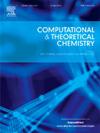加速锌电化学应用离子液体的发现
IF 3
3区 化学
Q3 CHEMISTRY, PHYSICAL
引用次数: 0
摘要
本文讨论了深度神经网络(DNN)和变分自编码器(VAE)在预测关键离子液体(IL)性质以及为潜在电解质生成新的阴离子和阳离子对方面的联合应用。使用IL分子指纹数据集训练预测模型,以预测熔化和分解温度等关键特性。研究人员有效地利用VAE生成阴离子和阳离子的合理化学组合,旨在发现适合室温操作的新型IL电解质。迁移学习进一步完善了这些模型,提高了锌电化学应用的预测精度。所得到的预测模型表现出很强的性能,在多个数据集上的熔点和分解温度预测的R2值都超过0.97。通过现有文献验证了几个新提出的il,强调了它们的实际相关性。这种结合的方法有效地将计算预测与实际电解质开发联系起来,促进了锌电池技术的发展。本文章由计算机程序翻译,如有差异,请以英文原文为准。

Accelerating the discovery of ionic liquids for zinc electrochemical applications
This paper discusses the combined use of deep neural networks (DNN), and variational autoencoders (VAE) for predicting key ionic liquids (IL) properties, and for generating new anion and cation pairs for potential electrolytes. Predictive models were trained using datasets of IL molecular fingerprints to forecast critical properties such as melting and decomposition temperatures. A VAE was effectively utilized to generate chemically plausible combinations of anions and cations, aiming to discover new IL electrolytes suitable for operation at room temperature. Transfer learning further refined these models, enhancing prediction accuracy specifically for zinc electrochemical applications. The resulting predictive models showed strong performance, achieving R2 values exceeding 0.97 for both melting point and decomposition temperature predictions across multiple datasets. Several of the newly proposed ILs were validated through existing literature, underscoring their practical relevance. This combined approach efficiently bridges computational predictions with practical electrolyte development, enhancing the development of zinc battery technologies.
求助全文
通过发布文献求助,成功后即可免费获取论文全文。
去求助
来源期刊

Computational and Theoretical Chemistry
CHEMISTRY, PHYSICAL-
CiteScore
4.20
自引率
10.70%
发文量
331
审稿时长
31 days
期刊介绍:
Computational and Theoretical Chemistry publishes high quality, original reports of significance in computational and theoretical chemistry including those that deal with problems of structure, properties, energetics, weak interactions, reaction mechanisms, catalysis, and reaction rates involving atoms, molecules, clusters, surfaces, and bulk matter.
 求助内容:
求助内容: 应助结果提醒方式:
应助结果提醒方式:


